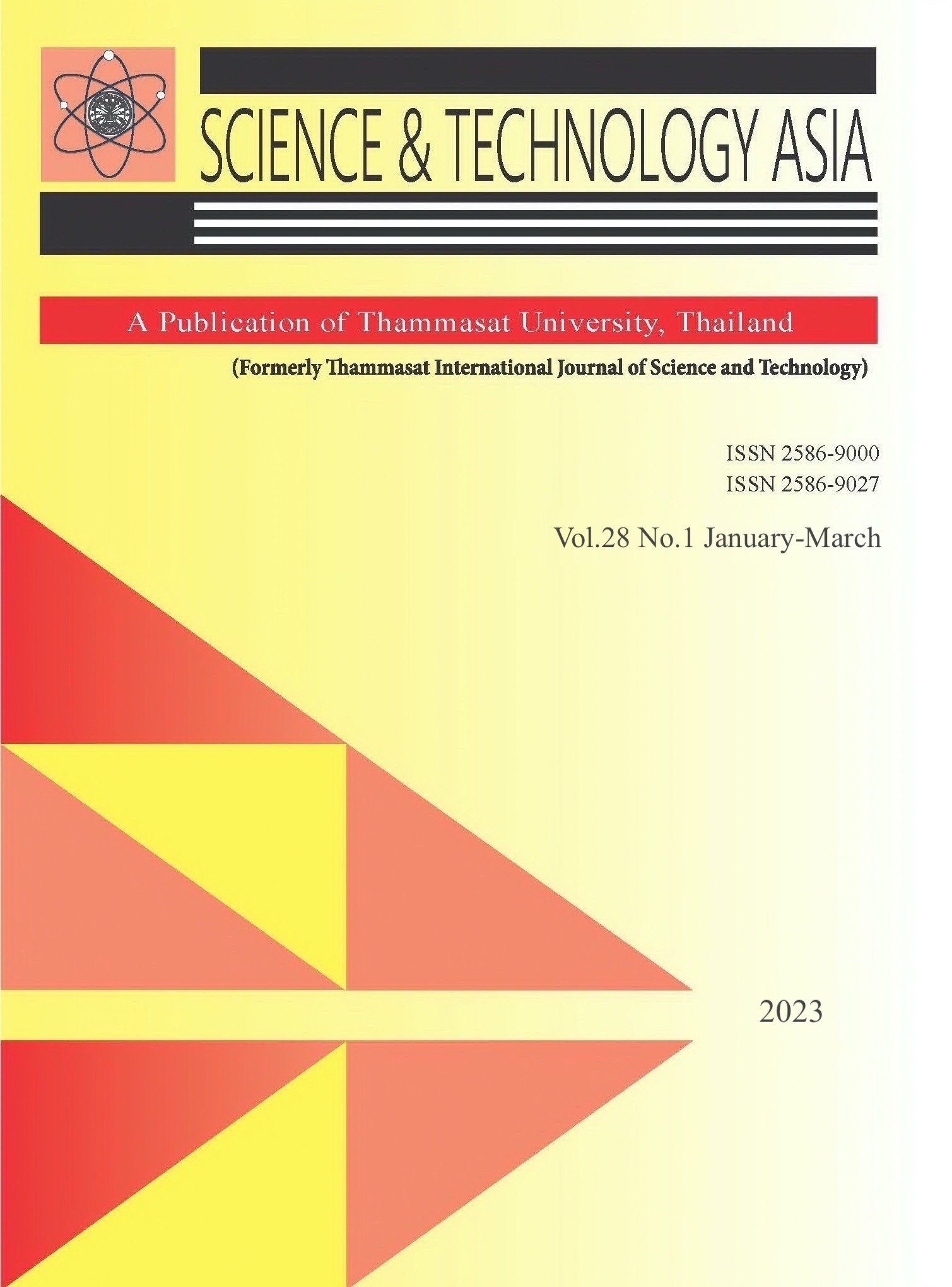Effect of Phenylalanine and Methyl Jasmonate on Secondary Metabolite Production by Shoot Cultures of Holy Basil, Purple-Type (Ocimum sanctum L.)
Main Article Content
Abstract
Holy basil, purple-type (Ocimum sanctum L.) is a medicinal plant that accumulates a range of secondary metabolites with important antioxidant capacities. Secondary metabolite production may be enhanced by precursor feeding and elicitation under aseptic conditions and is used to supply medicinal and pharmaceutical needs. This study investigated the roles of phenylalanine (Phe), a precursor, and methyl jasmonate (MeJA), an elicitor, in the enhancement of eugenol, total phenolic and flavonoid accumulation, and antioxidant activity in shoot cultures of holy basil, purple-type. Single-node segments were cultured on Murashige and Skoog (MS) medium supplemented with Phe at 25 and 50 μM, and MeJA at 50 and 100 μM, both alone and in combination. MS medium supplemented with only 6-benzyladenine (BA) (2.22 μM) was used as a control. Shoots were harvested at three weeks and analyzed for secondary metabolite accumulation and antioxidant activity. MeJA alone was shown to be more effective than Phe, and no synergistic effects (synergistic coefficients = 0.47-0.96) were observed. The highest accumulation of eugenol (208.84±9.07 μg/g dry extract), total phenolics (190.38±5.76 mg GAE/g dry extract), and total flavonoids (260.43±7.28 mg CE/g dry extract) were recorded following treatment with 100 μM MeJA. These were 14.57, 2.94, and 4.74 times greater than the control, respectively. This treatment also produced the greatest enhancement in DPPH radical scavenging, with an EC50 value of 8.26±1.09 μg/mL. The study demonstrated MeJA to be an effective elicitor of secondary metabolites and antioxidants in shoot cultures of holy basil, purple-type.
Article Details

This work is licensed under a Creative Commons Attribution-NonCommercial-NoDerivatives 4.0 International License.


